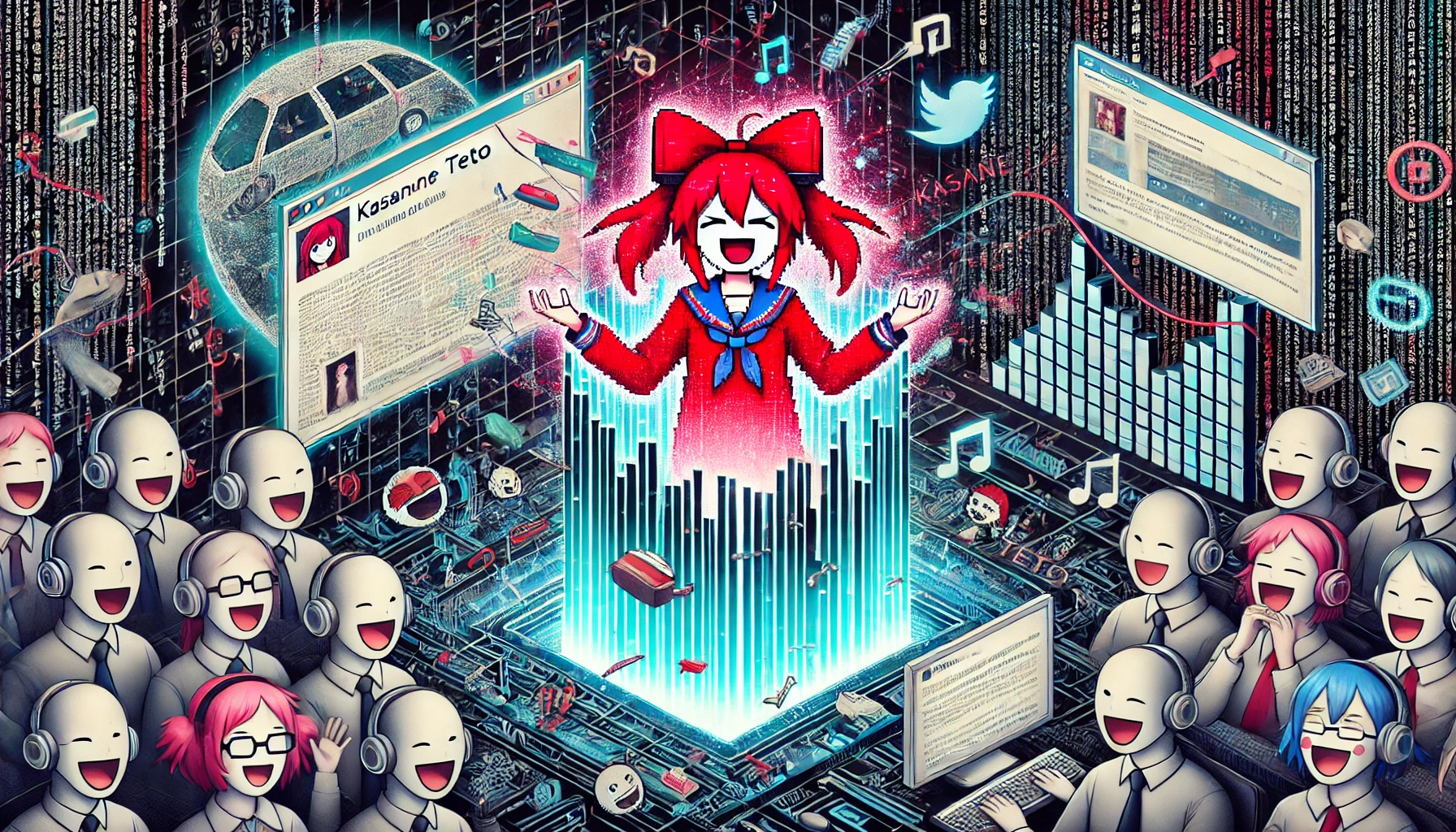1. Introduction
VTubers (Virtual YouTubers) are content creators who use avatars to upload videos or livestreams. Unlike traditional YouTubers and streamers, they don’t have to show their real faces, creating a unique entertainment culture.
Japan, in particular, has seen a massive growth in VTuber culture, which has since spread worldwide. But why did VTubers originate in Japan, and why did they become so popular? In this article, we will explore the history, cultural background, and appeal of VTubers.
2. History of VTubers
① The Birth of VTubers (2016–)
The concept of VTubers became widely known when Kizuna AI debuted in 2016. With her AI (Artificial Intelligence) persona, a cute 3D avatar, and engaging talk style, she quickly gained popularity.
While attempts to create avatar-based content existed before, Kizuna AI was the first to establish the VTuber genre. Due to technological limitations at the time, most VTuber content was pre-recorded rather than livestreamed.
② The Boom of VTubers (2018–)

By 2018, corporate VTuber groups like Nijisanji and Hololive emerged, fueling the industry’s rapid expansion.
• Nijisanji introduced Live2D technology, allowing for easier and more affordable VTuber creation, leading to a large increase in VTuber numbers and diversity.
• Hololive incorporated idol culture, focusing on VTubers as virtual idols who interact with fans.
Additionally, technological advancements enabled real-time livestreaming, making direct interaction with audiences a major appeal of VTubers.
③ Global Expansion and Diversification (2020–)

After 2020, Hololive EN and NIJISANJI EN launched, helping VTubers gain popularity worldwide.
• Rise of English-speaking VTuber fans
Even non-Japanese speakers became fans due to the appealing character designs, expressive reactions, and engaging personalities, often assisted by subtitles and translated clips.
• Success in the music industry
Many VTubers began releasing original songs and covers, gaining popularity in the music scene.
With technology becoming more accessible, independent (indie) VTubers also began to thrive, creating diverse content beyond corporate VTubers.
3. Why Did VTuber Culture Develop in Japan?
Several cultural and technological factors contributed to the rapid growth of VTuber culture in Japan.
① Japan’s Strong Character Culture

Japan has a deep-rooted culture of anime, manga, and game characters.
• The idea of “anime-style characters talking” felt natural to Japanese audiences.
• Voice actor culture played a significant role—fans were already accustomed to appreciating performances based on voice and character personality.
② Connection to Idol Culture

VTubers have strong ties to Japanese idol culture.
• The concept of “supporting your favorite (oshi) idol” naturally extended to VTubers.
• Many VTubers maintain a “pure and cute” image, but often reveal unexpected nerdy or funny personalities, making them even more appealing.
③ Face Reveal Not Required

Unlike traditional streamers, VTubers do not need to show their real faces, offering several advantages:
• People can become popular based on their voice and personality rather than appearance.
• Anyone, regardless of age or gender, can create an avatar and “become” their ideal self.
This lower barrier to entry encouraged more people to become VTubers, significantly expanding the industry.
4. The Appeal of VTubers

① Diverse Content Styles
VTubers create content in various styles:
• Gaming streams – One of the most popular VTuber activities, allowing direct interaction with viewers.
• Music and Singing – Many VTubers cover songs or release original tracks, often reaching mainstream success.
• ASMR & Talk Streams – A way for VTubers to build deeper connections with their fans.
② The “Clip Culture” Boost
Japan’s VTuber clip culture has contributed to their viral growth.
• Short clips highlight the funniest or most emotional moments, making VTuber content more accessible to new audiences.
• This culture helped VTubers gain traction overseas, as translated clips became popular on platforms like YouTube and TikTok.
5. The Global Impact of VTubers & Future Prospects
VTuber culture has expanded far beyond Japan:
• English-speaking VTubers have gained massive popularity.
• Spanish, French, and other language-based VTuber communities are growing.
• Metaverse & AI integration is evolving the industry.
As technology advances, VTubers may become even more realistic, with AI-driven VTubers and VR-based interactions playing a bigger role in the industry’s future.
6. Conclusion
VTubers represent a fusion of Japan’s character culture, idol fandom, and streaming trends, creating a new form of entertainment.
• Why did VTubers become popular in Japan? → Strong anime and idol culture.
• Why did VTubers gain a global audience? → Unique and engaging personalities, plus translation efforts.
• What’s next for VTubers? → Metaverse, AI, and more innovative interactions.
Although VTubing is still a relatively young industry, it is constantly evolving and shaping the future of online entertainment.
Recommended Articles

-a-2channel-prank/






Comments